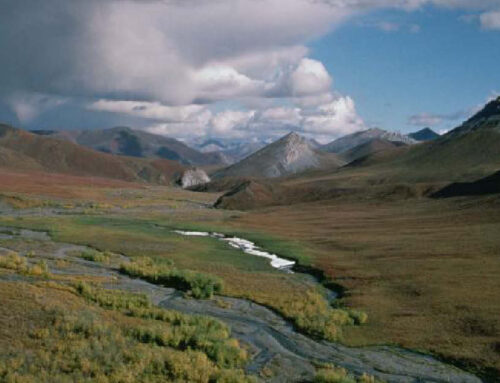Current Tally of Oil & Gas Leases Awarded Royalty Relief:
| State | Leases* | Acres* |
|---|---|---|
| Wyoming | 375 | 211,106 |
| Utah | 81 | 90,835 |
| North Dakota | 55 | 35,283 |
| Colorado | 6 | 6,803 |
| Montana | 4 | 2,469 |
| TOTAL | 521 | 346,496 |
*To avoid double-counting, the totals for leases and acres have been adjusted to exclude relief granted to nine producing units and several communitization agreements.
Source: BLM LR2000 database; data through 09/09/2020
In response to a downturn in the international oil and gas market, the Trump Administration has been quick to offer a host of handouts to the U.S. oil and natural gas sector. In addition to loans and Strategic Petroleum Reserve machinations, the Department of the Interior led by Secretary David Bernhardt has promised to grant a reduction in the amount of royalties owed to federal and state taxpayers for companies operating on federal lands and waters that apply. This analysis is dedicated to tracking all royalty relief actions.
Click below to skip down to the most recent updates:
Background
In March, a group of countries led by Russia and the OPEC cartel led by Saudi Arabia failed to reach a deal to cut oil production and mitigate the impact of a long-term supply and demand mismatch in the international market. This impasse, and growing awareness of the economic toll of the coronavirus pandemic, sent oil prices plunging. Soon after, corners of the U.S. oil and gas sector and their backers in Congress began calling for widespread royalty relief for production on federal lands and waters. President Trump seemed to publicly reject blanket relief after a White House meeting with industry representatives on April 4. But in subsequent weeks, Secretary of the Interior David Bernhardt promised to grant royalty relief to oil and gas companies that applied.
The federal royalty rate is a set percentage of the sales value of oil and gas produced from federal lands or waters that companies agree to pay the Department of the Interior in exchange for the rights to develop the publicly-owned natural resources. For onshore federal leases, the royalty rate of 12.5% has not changed since it was set in 1920 and now lags rates on most state and private lands as well as the 18.75% rate generally set for offshore federal leases. Reducing the rate further, known as “royalty relief,” would incentivize more production from federal lands and waters which would worsen the global supply glut driving the historically low oil prices.
In April, the Bureau of Land Management (BLM), which controls oil and gas development on federal lands, published guidance on how federal lessees could apply for a royalty rate reduction or a lease suspension. The guidance prioritizes oil and gas companies’ financial interest over the BLM’s statutory responsibility to get federal taxpayers a fair return for federally-owned oil and gas by cutting the review process and suggesting rates as low as 0.5 percent. (See our comments on the guidance.) Widespread royalty relief granted by the BLM could significantly reduce royalty revenue, roughly half of which is shared with state governments.
In response to the guidance, hundreds if not thousands of oil and gas companies have applied to the BLM for royalty relief. The exact number of applicants is unknown to both the public and Congress because of BLM’s resistance to transparency. But limited information is starting to trickle out. Below is a running analysis of requests for royalty reductions made to the BLM as information becomes available.
Relief Tracking
May 20:
According to initial data from the BLM’s LR2000 database, operators of 76 leases in Utah have requested royalty relief since the beginning of April. The leases span nearly 90,000 acres, including some near the Canyonlands National Park, the Ouray National Wildlife Refuge, and the Uintah and Ouray Reservation. A quick breakdown:
June 1:
In the last few days, BLM has updated its records to reflect royalty relief granted to nine more leases. Of the nine leases, eight are in Wyoming, and the last is in Colorado. Together they cover an additional 12,200 acres of federal lands, raising the overall royalty relief total to 85 leases covering 102,000 acres. Below are a few more findings from the newest leases with royalty relief:
June 8:
Last week, the BLM Wyoming office updated their records to reflect an additional 64 applications for royalty relief for federal leases or producing units – groups of leases whose production is tallied together. BLM Wyoming staff granted relief to 32 of the requests, but denied rate reductions to the other half, marking the first denial of royalty relief to date. Here’s a quick breakdown of the numbers:
June 22:
Over the last two weeks, the BLM has updated their records to reveal several dozen new leases with royalty relief. The vast majority of these leases are concentrated in Wyoming, where the BLM state office continues to approve the lowest possible royalty rate for all leases. Meanwhile, data from the BLM office in Colorado show that more leases have been denied relief than have received it – some welcome news for taxpayers.
August 3:
Last week, Department of the Interior (DOI) officials went on record to announce that the royalty relief program for oil and gas leases on federal lands will be drawing to a close. Since April, the effort to subsidize producers in defiance of market realities has reduced the royalty rate owed to taxpayers from oil and natural gas developed on hundreds of leases covering hundreds of thousands of acres of federal land across at least five states. Ending consideration of new royalty relief requests is welcome news, but the full scope of leases affected, and the program’s cost to federal and state budgets, will only be understood in the months to come.











Get Social